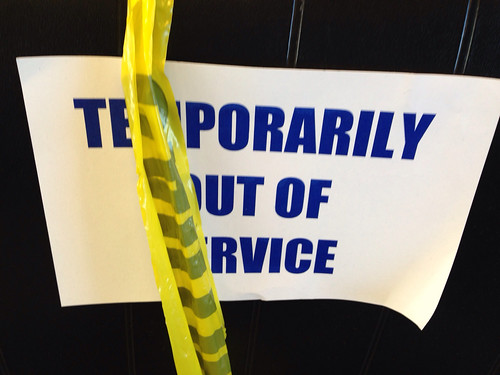WHAT IS WORK?
/A small group of us continue to think through issues of new ways of working, and specifically, the growth of Work as a Service (WaaS) as supported by Elance, oDesk, and many others. As I said in a previous post, "work used to be contained in boxes in organization charts, but now can come from employees, contractors, machines, and/or crowd sourcing." I was tasked with addressing this question:
How do employees learn to describe their work as a service?
Getting our heads around any new way of working requires a shift in perspective. This is a shift from thinking about a job being something we do and have, to an understanding of the value we provide in the work ecosystem. (I am extending my answer to go beyond employees to anyone who is participating in the broader concept of getting some piece of work done.) We apply our knowledge, skills, abilities, and motivations in the service of work opportunities. It's not that we are all "service workers," but rather that we make contributions in service of some work.
Learning how to describe our contributions and how to find where they can best be of service to work is the task at hand
One of our hurdles is that we don't haven't had an obvious language to shift to. The ideas of job design as formally taught in Human Resources programs took root in 1911 (though job design really goes back as far as any use of the division of labor -- say as far back as hunters versus gathers) with the publication of Frederick Taylor's book, The Principles of Scientific Management. That's a lot of language to shed.
We've had some attempts to move to a new language
Participants in the Management Innovation exchange (the MIX) attempt to hack work. The subheading on the MIX site is "It's time to reinvent management. You can help." One of my co-hackers there, Joachim Stroh, talks about moving from language around filling jobs and positions to matching talents and roles. I like his language and use it as a starting point here.
When I think about talent, I think about knowledge, skills, and abilities. Knowledge, skills, and abilities are a bit old school HR, but if we explicitly combine KSAs with motivation and opportunity we have something a bit new. I say a bit new because Motivation * Opportunity * Ability is a classic model of Performance (Blumberg & Pringle, 1982). I like bringing one of the classics into this modern arena.
The difference here is that, instead of MOA=>P being something that management and HR think about, we all think about these dimensions and we use them as lenses to focus on ourselves
Motivations and abilities are what we bring to the work at hand. The opportunity is where our contribution is needed. Joachim talks about tasks and roles. Tasks (either large or micro) need to be completed as part of the work. If you are generally taking on particular families of tasks then you might talk about how you fill a role. "I tend to be the process facilitator when my team takes on a new problem." Process facilitator being a role and that role is made up of tasks.
The tasks we take on and the quality of our performance is in service to the work. I really want to capitalize it as Work to be sure the gravity of this service is understood.
There are many dimensions to cover in making this shift effective. The first is that work be better understood as bundles of tasks. The second is that we understand how our talent and motivations align with task opportunities. A third is that there be transparency around the tasks to be done and how they flow in the broader work. It may be difficult at this stage of evolution for many people to see how their service fits in, because we don't yet have the needed transparency.
As I tell my organizational design students, and as I explain in my book, The Plugged-In Manager, you can never change just one thing. Instead, we need to be making shifts throughout how we manage work and its design. If the idea of a job or position is dropped, we then are both more free and more obligated to find matches for our own talent and motivations. We need transparency to make these matches: transparency around our own talents and motivations, and around available opportunities. Learning to do this is not trivial, but is the direction I expect we will need to go.
Have you learned to describe your service in new ways? Have you learned to describe the opportunities and tasks you need to have completed in a way that fits this WaaS approach? What guidance can you share?








